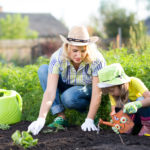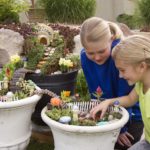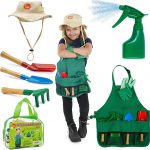Kids love to get muddy and dig in the dirt, which gives you a great reason to get them involved in some composting activities for kids. Not only will they find these engaging, but it will also give them an opportunity to learn about nature and cultivate green habits. So, what are the best composting activities for kids? Let’s find out!
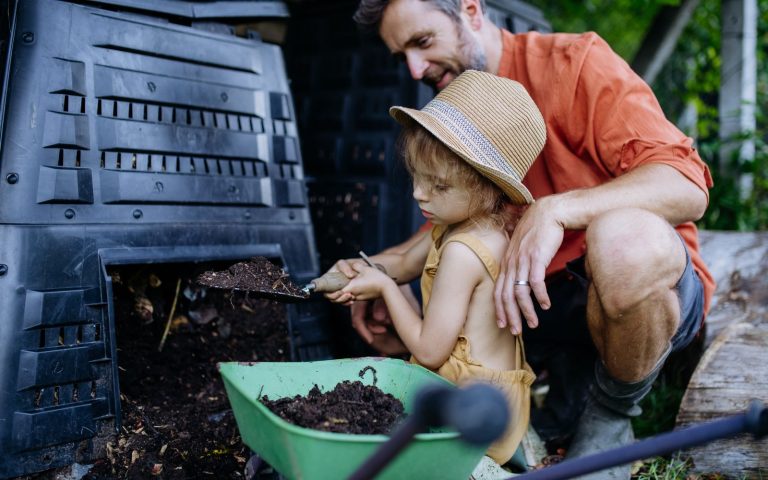
The Basics of Composting
If your kids aren’t familiar with composting, start by teaching them the basics. Composting refers to nature’s process of breaking down biological waste into rich fertiliser. The process takes around 6 to 9 months. It’s usually done in a compost bin, where natural and organic waste is allowed to mix and, over time, turns into crumbly compost teeming with nutrients.
However, it’s essential to understand that not all materials are made for composting. Through play and communication, you can educate kids on what kitchen waste can be composted and why certain materials can and can’t be added.
Other benefits of composting are:
- Less waste going to landfills – composting is one of the best ways to repurpose organic waste and avoid unnecessary waste ending up in landfills. There are many types of composing. Some of the most popular include traditional composting, worm farming, and bokashi. Learn more about bokashi vs. composting.
- Great for the environment – composting lowers greenhouse gas emissions that can have an affect on climate change.
- Conserves water – composting increases the water-retaining properties of the soil.
Getting Started with Composting Activities for Kids
Here are a few tips to get started on composting with kids to ensure a positive experience.
Preparing the necessary materials and tools
Composting is straightforward; you only need a few supplies to begin with.
Firstly, you’ll need a compost bin, where all the magic will happen! These bins come in multiple shapes and sizes, and choosing the right composter for you depends on several factors: the amount of waste you plan to compost, how fast you want to compost, and the amount of work you intend to do.
Next, you’ll need waste to add to the bin. This could include twigs, leaves, grass clipping, and any organic household waste. Always remember that an equal ratio of nitrogen-rich greens and carbon-rich browns is necessary for a successful compost blend.
This is a great learning opportunity for the kids as you search and teach them what can and can’t be composted.
Avoid dairy products, fish, meat, grease, or fatty foods in your compost piles as they don’t decompose quickly, cause odours, and can attract rodents.
Last, you’ll need a good old-fashioned shovel or garden fork to turn your pile when the time comes.
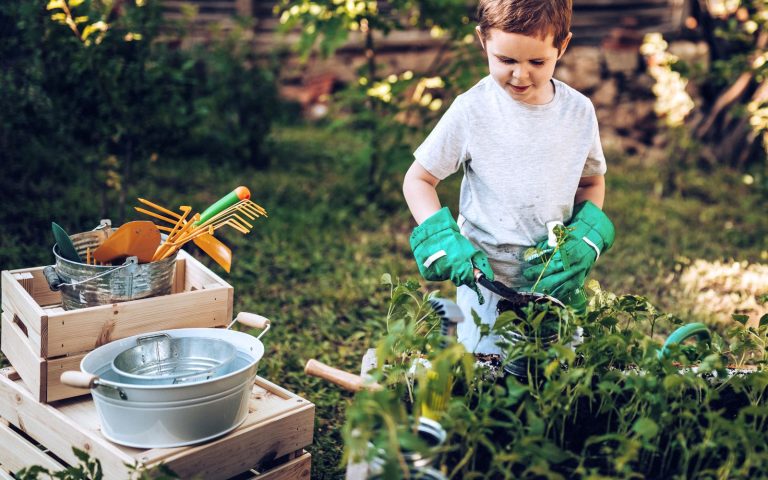

Setting up a kid-friendly composting area
From putting your compost bin on the counter to placing it in the backyard, you can create a kid-friendly composting area just about anywhere!
Make sure it has enough access to sunlight and fresh air and is within your child’s reach.
Safety precautions for children involved in composting
When children are handling waste or compost, you must take standard safety precautions to protect them from potentially harmful effects.
Safety measures include wearing gloves, washing hands afterward, and wearing a dust mask for children with dust allergies.
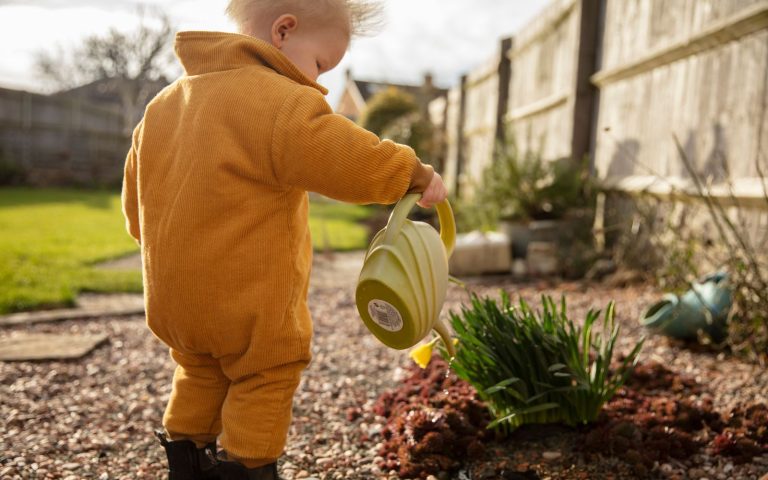

5 Exciting Composting Activities for Kids
1. Compost Scavenger Hunt
A Compost Scavenger Hunt is a great activity to bring out a child’s inner explorer and teach them the difference between compostable and non-compostable materials.
For this activity, ask your kids to collect a bunch of items and separate them into piles of green and brown. Take this as an opportunity to explain that a 50:50 mix of greens and browns is essential for a successful compost heap.
2. Worm Composting (Vermicomposting)
Worm composting (aka vermicomposting) is an excellent way to show children how tiny worms play a crucial role in nature.
Start with a plastic container and fill it with moist bedding (made of shredded newspaper, peat moss, or leaves). Next, add food waste over the bedding and then add compost worms.
Take care of the worms by feeding them daily and watering the container if it’s looking dry for effective decomposition.
Soon, the worms will eat up all the waste, producing worm castings in return that you can then separate and mix with soil to boost your garden’s fertility.
Harvesting the castings from the worm bin by separating worms from ready vermicompost is another activity your kids will enjoy!
However, keep in mind that regular garden worms can’t be used for vermicomposting, you’ll have to purchase proper composting worms like Red Wigglers.
3. Craft a Soil-arium
Crafting a Soil-arium is one of the best composting activities for kids that lets them do some actual composting!
Give each child a large glass jar and have them fill it with soil, shredded newspaper, and chopped kitchen scraps. Finally, add a layer of grass clippings and shredded dead leaves. Repeat these deposits until the jar is full.
If your kids feel the need to express themselves by including more fruit scraps or going easy on the newspaper, let them.
Next, add a little water to the concoction and secure it tightly with the lid. Poke holes in the lid for aeration and draw a “fill line” on the glass to indicate the current height of the compost. Place the soil-arium in a sunny spot where your kids can easily observe it throughout the composting process (approximately eight weeks).
Every week or two, let the kids re-measure and note changes in the compost height as the contents settle and nature does its work.
This hands-on experience is perfect as the little ones will get to watch decomposition with their own eyes, understand science, and create memories along the way!
4. Compost Journaling
Encourage the kids to document their entire experience in a composting journal. From asking questions and seeking answers to recording observations and changes in the compost pile, journaling will help increase your young gardener’s knowledge and lock in their learnings.
5. Planting in Compost-Enriched Soil
Compost is a plant’s best friend, and you can help your kids see this connection through this composting activity.
When the contents of your compost bin turn dark and crumbly, the compost is ready for use. Kids can then sprinkle it on garden beds and plant seeds or seedlings in the nutrient-rich soil.
Monitoring plant growth and development in the compost-enriched soil will teach them the difference compost can make to a plant’s growth, making them grow big and strong.
You could take this activity a step further and plant the same plant in compost-enriched soil and one in no compost added, then note the difference in growth.
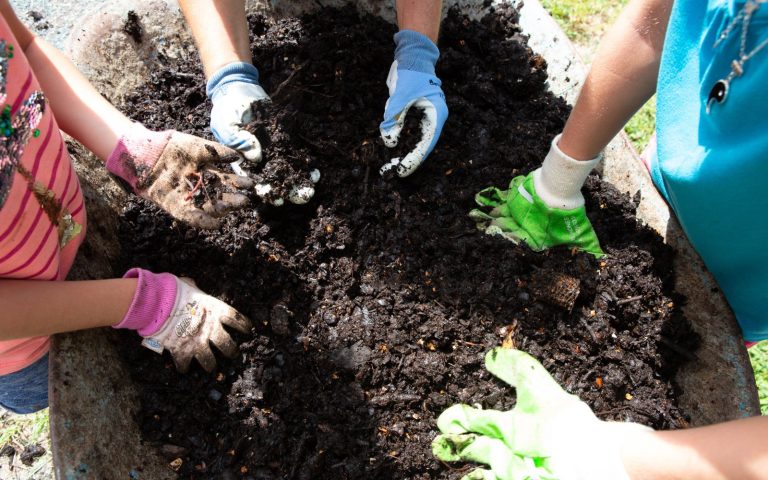

Final Words
Composting activities for kids can be a life-learning experience. These activities not only foster a love for nature and sustainability in younger ones, but also help them learn the valuable skills of caretaking, responsibility, patience, and environmental awareness.
So there you have it! Choose from the best composting activities for kids mentioned above to keep having them enjoy the beautiful practice of composting to the fullest. Remember, there are always plenty of ways to make your gardening activities for kids more engaging, fun, and exciting!


About the Author
Elle Reed is a passionate gardener and advocate for teaching beginner gardeners how to grow their own food. Elle’s mission is to inspire and empower people to get back to basics, grow their own produce, and embrace a sustainable lifestyle.
“Whether it’s a few herb pots in an apartment, a potager or a full garden plot, we can all ‘start somewhere’ to grow our own food”.
Related Posts
-
Planting Activities for Kids
Growing Plants with Kids Can Be Fun! Are your kids spending more times on screens…
-
Monthly Activity Boxes for Kids
The Perfect Way to Explore, Be Creative and Learn About the World Now more than…
-
8 Best Kids Gardening Tools for your Little Gardener
In this article, we'll discuss the best kids gardening tools to help boost love for…

